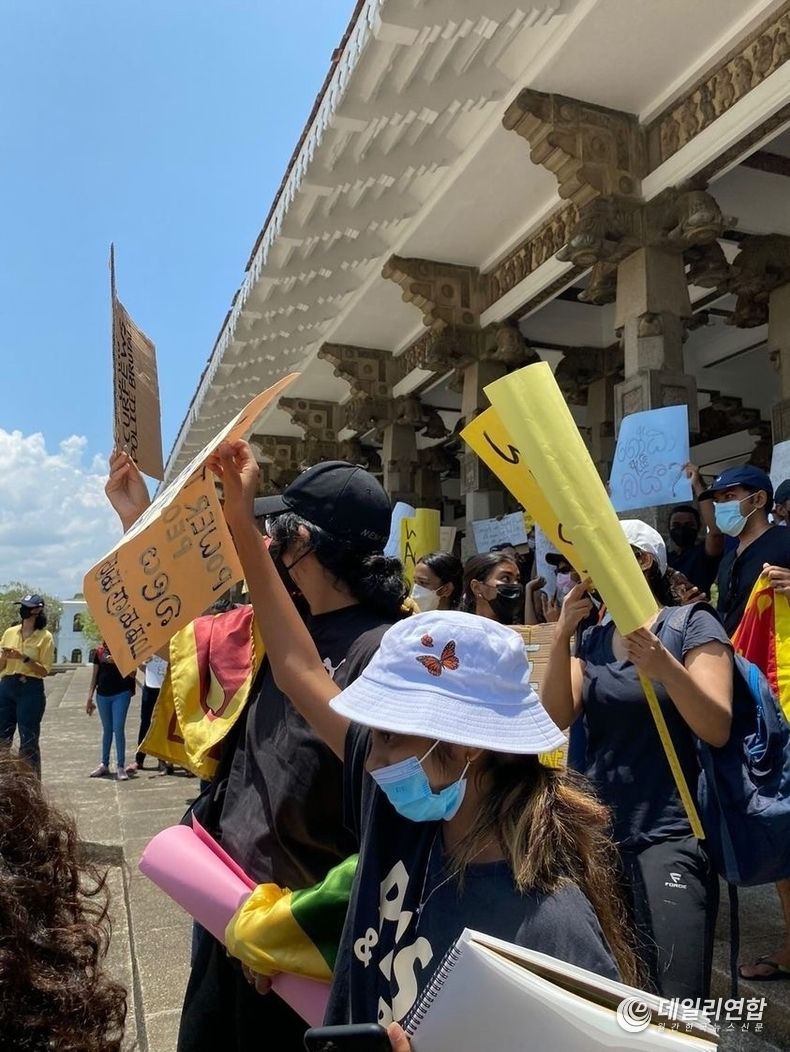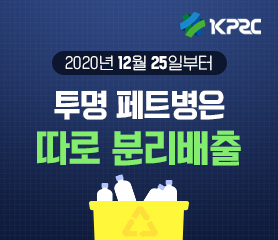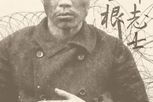
데일리연합(월간, 한국뉴스신문) Joanne Baek, Christina Won Ι Sri Lanka Article (Yonhap News)
“Sri Lanka: The Endless Economic Crisis and Political Uncertainty...Fundamental Solutions Desperately Required.”
For the past few months, Sri Lanka has suffered through its worst economic crises since the country’s independence. The country currently faces high inflation rates, shortages of fuel and food supplies, and depleting foreign exchange reserves. The economic decline and struggle led to mass protests starting in April, reaching its peak in July as Sri Lankan protesters stormed into then-President Gotabaya Rajapaksa’s official residence in Colombo.
Majority of the locals blame the Rajapakse regime for the economic mismanagement. In April, Sri Lanka defaulted on its foreign debt for the first time in history and the country’s poor investment climate is making the economic recovery harder. Videos and articles capturing the scenes of protests and poor living standards in the country gained Sri Lanka global attention with many wondering when the crisis will cease to end.
Sri Lanka received emergency assistance from Japan, a currency swap offer from Bangladesh, and humanitarian aid from the European Union. The United States announced last month that its total assistance to Sri Lanka during its crisis had exceeded 90 million USD. The World Bank has repurposed funds from current financing projects to provide essential goods. And in September, Colombo reached a preliminary agreement with the International Monetary Fund (IMF) on a 2.9 billion USD assistance package.” [South Asia Brief, October 2022] Sri Lanka is also receiving economic assistance from China and India. China, as the country’s largest bilateral creditor and trade partner, have begun debt-reconstructing talks with Sri Lanka, an important step toward finalizing the IMF deal. India has also provided financial support with 4 billion USD.
However, the economic hardship in the country remains unchanged. The inflation rates are still on the rise and expected to remain high until mid-2023. The poor living conditions remain with continuing inflation, fuel shortages, and import restrictions. According to a recent World Bank report, “urban poverty on the island has tripled in the last year, from 5% to 15%.” The inflation increased to nearly 69.8% as of September 2022 while food prices are spiking to 94.9%. [The Hindu, October 2022] On top of this, the World Bank stated that no fresh financing would be offered unless an “adequate macroeconomic policy framework is in place.”
On another note, with the previous President Gotabaya Rajapaksa’s resignation, the new President Ranil Wickremesinghe has been appointed to office after a parliamentary vote. Gaining as many as 134 votes in the 225 member House, the new President is to serve Gotabaya Rajapaksa’s remaining term until November 2024. However, the Sri Lankan citizens remain unsatisfied by the changes as the government they wanted was a government free from the Rajapaksas’ influence. Ranil Wickremesinghe is widely known to be close to the Rajapaksa family.
Furthermore, Yamini Mishra, Amnesty International’s South Asia Regional Director, stated that “The new government in Sri Lanka has continued resorting to the unlawful use of force, intimidation and harassment to subdue protestors, sending a chilling message to the people of Sri Lanka that there is no room for dissent.” Due to the repeated attempts to crackdown on protest rights by authorities and the continuous influence of the Rajapaksa regime, anger amongst the citizens remains unchanged.
Looking at the current economic and political status, it is hard to envision a stable environment for the country’s near future.
It is important for the government to introduce wide-ranging economic reforms for sustainable growth. To ensure progress towards economic recovery, the World Bank urges Sri Lanka to “address the root structural causes that created this crisis.”
Reference: “Sri Lanka’s Economic Crisis is Still Spiraling” | Foreign Policy’s South Asia Brief (By Michael Kugelman)
“스리랑카, 끝이 보이지 않는 경제적 위기와 정치적 불확실성...근본적인 대책 절실”
지난 몇 달 동안 스리랑카는 독립 이후 최악의 경제 위기를 겪었다. 현재 스리랑카는 높은 물가상승률과 연료 및 식량 공급 부족, 외환보유고 고갈 등으로 극심한 어려움에 직면해 있다.
경제적 쇠퇴와 고난은 올해 4월부터 대규모 시위로 이어졌고, 7월에 스리랑카 시위대가 수도 콜롬보에 위치한 고타바야 라자팍사(Gotabaya Rajapaksa) 전 대통령 관저로 몰려들며 절정에 이르렀다.
국민 대다수는 라자팍사 정권을 경제적 실책에 대한 일차적 책임자로 간주하고 있다. 지난 4월, 스리랑카는 역사상 처음으로 외채에 대한 디폴트를 선언했고 열악한 투자 환경으로 인해 경제적 회복이 더 어려워지고 있는 상황이다. 스리랑카는 시위 현장과 열악한 생활 수준을 담은 비디오와 기사들로 전 세계적인 주목을 받았고, 많은 사람들은 이 위기가 언제 끝날지 궁금해하고 있다.
스리랑카는 일본으로부터의 긴급 지원과 방글라데시의 통화 스왑 제안, 유럽 연합(European Union)의 인도적 지원 등 각국의 많은 도움을 받았다. 미국은 지난달 스리랑카에 지원한 총 금액이 9천만 달러를 넘었다고 발표했다. 세계은행은 현재 진행중인 자금 조달 프로젝트에 들어갈 돈을 일부 전용하여 스리랑카 필수 물품 지원에 사용하기도 했다. 그리고 9월에 콜롬보는 국제통화기금(IMF)과 2.9억 달러 규모의 지원 패키지에 대한 예비 합의에 도달했다. 또한 스리랑카는 중국과 인도로부터도 경제적 지원을 받고 있다. 스리랑카의 최대 채권국이자 무역 파트너인 중국은 스리랑카와 부채 재건 협상을 시작했으며, 이는 IMF 협상을 마무리하기 위한 중요한 선재 조치이다.” [South Asia Brief, October 2022] 인도 또한 40억 달러의 재정 지원을 제공했다.
그러나 스리랑카 경제적 어려움은 여전히 개선되지 않고 있다. 물가는 여전히 치솟고 있으며 2023년 중반까지 높은 수준을 유지할 것으로 예상된다. 지속적인 물가 상승, 연료 부족 및 수입 제한으로 인해 스리랑카 국민들의 생활 여건은 여전히 열악한 상황이다. 최근 세계은행 보고서에 따르면 "작년부터 스리랑카의 빈곤율은 5%에서 15%로 세 배 증가” 했다. 지난 9월, 스리랑카 물가 상승률은 거의 69.8% 에 이르고 식량 가격은 94.9%로 급등하고 있다. [The Hindu, 2022년 10월] 세계은행은 "적절한 거시경제 정책 틀이 마련되지 않는 한 새로운 자금 조달은 제공되지 않을 것"이라고 밝혔다.
한편 고타바야 라자팍사 전 대통령의 사임으로 라닐 위크레메싱헤(Ranil Wickremesinghe)는 의회 투표를 거쳐 신임 대통령으로 임명되었다. 의회 225표 중 134표를 얻어 당선된 라닐 위크레메싱헤는 2024년 11월까지 고타바야 라자팍사의 남은 임기를 수행할 예정이다. 그러나 스리랑카 시민들은 라자팍사 정권의 영향력으로부터 자유로운 정부를 원했기 때문에 이에 만족하지 못하고 있다. 라닐 위크레메싱헤는 라자팍사 가족과 가까운 것으로 널리 알려져 있기 때문이다.
국제앰네스티의 남아시아 지역 국장인 야미니 미쉬라는 "스리랑카 새 정부는 시위대를 제압하기 위해 불법적인 무력 사용, 협박 및 괴롭힘에 계속 의존하고 있고 이를 통해 정부는 국민들에게 반대 의견을 제시할 수 없다는 것을 인식시켜주려고 한다.” 라고 말했다. 당국의 항의권을 단속하려는 반복된 시도와 지속적인 라자팍사 영향으로 인해 시민들은 계속해서 분노하고 있는 상태이다.
현재의 경제적, 정치적 상황을 볼때 스리랑카의 조속한 안정화는 어려울 것으로 예상된다.
따라서 스리랑카 정부는 지속적인 성장을 위한 다각도의 경제 개혁 도입을 신중히 고민해야 하며 세계은행도 “위기를 초래한 근본적인 원인을 해결할 것”을 스리랑카 정부에게 촉구하고 있다.
Reference: “Sri Lanka’s Economic Crisis is Still Spiraling” | Foreign Policy’s South Asia Brief (By Michael Kugelman)




















